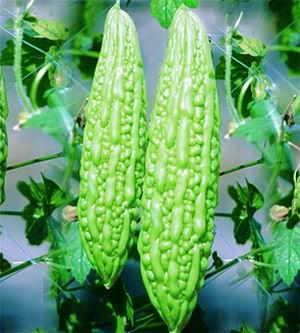
Properties
- Considered astringent, antidiabetic, abortifacient, antirheumatic, contraceptive, galactagogue, parasiticide, anthelmintic, purgative, emetic, antipyretic, febrifuge, emmenagogue, cooling , tonic, vulnerary.
- Fruit considered tonic and stomachic.
Parts utilized
Leaves, roots and fruits.
Uses
- In the Philippines, juice expressed from the green fruit is given for chronic colitis: also used for bacillary dysentery.
- Astringent powdered leaves or root decoction can be applied to hemorrhoids.
- Leaf juice for cough and as a purgative and anthelminthic to expel intestinal parasites, and for healing wounds.
- Seeds also used to expel worms.
- The vine or the juice of leaves used as mild purgative for children.
- In large doses, the fresh juice is a drastic purgative.
- Decoction of roots and seeds used for urethral discharges.
- Juice of leaves used for chronic coughs.
- Leaves and shoots used as vulnerary.
- Sap of leaves used as parasiticide.
- Fruit macerated in oil used as vulnerary.
- Fruit considered tonic and stomachic; used in rheumatism, gout, and diseases of the spleen and liver.
- Pounded leaves used for scalds.
- Infusion of leaves or leaf juice used for fevers.
- Used for chronic stomach ulcers.
- Root sometimes used as ingredient in aphrodisiac preparations.
- Decoction of root used as abortifacient.
- Fruit in large doses considered a drastic purgative and abortifacient.
- In India, root used as astringent; applied externally to hemorrhoids.
- In Lagos, decoction of leaves used as stomachic.
- Leaves used as anthelmintic and antipyretic, and applied externally to leprosy.
- In India and Malaya, pounded leaves are applied to skin diseases, burns and scalds.
- Poultice of leaves used for headaches.
- Infusion of flowers used for asthma.
- Olive or almond oil infusion of the fruit, without the seeds, used for chapped hands, hemorrhoids, and burns.
- Root, along with fruits and seeds, used as abortifacient, as well as remedy for urethral discharges.
- In Batavia, vine used as anthelmintic, purgative, and emetic.
- In Jamaica, leaf decoction or infusion is taken for colds, as laxative and blood cleanser. Warm tea infusions also used for toothaches and mouth infections. Also used as a bath/wash for skin eruptions and acne.
Used for eczema, malarial, gout, jaundice, abdominal pain, kidney (stone), leprosy, leucorrhea, piles, pneumonia, psoriasis, , rheumatism, fever and scabies. Also, boiled leaves and decoction of plant used to promote lochia.
- In Antilles, sweetened decoction of leaves used as emmenagogue and vermifuge.
- In Cuba, used for diabetes mellitus; used for wounds refractive to other treatments, for skin disease, and for sterility in women.
- In Puerto Rico, used for diabetes.
- In Indo-China, fruit macerated in salted water used for fluxes, catarrh, and children's coughs. Seeds employed in the treatment of dysentery.
- In Brazil, seeds used as anthelmintic.
In China, used as hypoglycemic and antidiabetic.
In Turkey, used for healing of cutaneous lesions and peptic ulcers.
Others
- Seeds with oil, employed as cosmetic.
- Leaves used to clean metals.
No comments:
Post a Comment